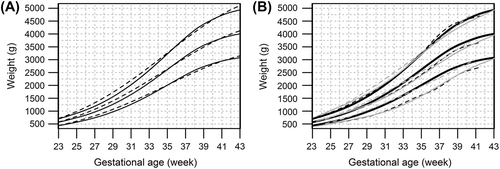Figures & data
Table I. Frequencies of birth weight, length, and head circumference (HC) measurements by sex, gestation weeks, and maternal parity in singleton and twin boys (A), and in singleton and twin girls (B).
Figure 1. Mean (± 2 SD) birth weight, length, and head circumference (HC) references for gestational age in singleton boys and girls born in Finland in 1996–2008. (The numerical data are given in Supplementary Table IA.).
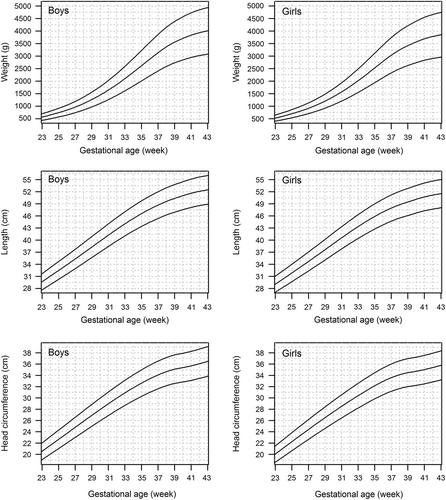
Figure 2. Change in the mean birth weight (right) and length (left) of singleton boys and girls from 1979–1983 (Citation16) to 1996–2008 (current data) in Finland. Curves indicate the difference from the population of 1979–1983. Solid line = boys born 1996–2008; dashed line = girls born 1996–2008.
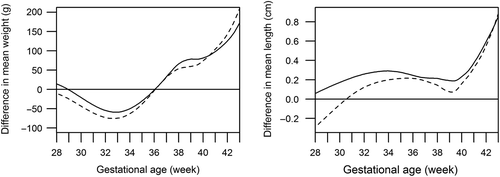
Figure 3. Timing and magnitude of intrauterine growth difference between singletons and twins. Curves indicate the mean difference from the singleton newborns of same sex and gestational age. Solid line = twin boys; dashed line = twin girls. A: Difference in mean birth weight by gestational age; B: Difference in mean birth length by gestational age; C: Difference in birth head circumference (HC) by gestational age.
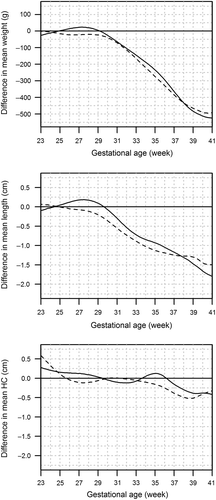
Figure 4. Effect of parity on birth size. Sex-specific birth weight, length, and head circumference (HC) curves for primipara (black) and multipara (grey) singletons (solid lines) and twins (dotted lines). (The numerical data are given in Supplementary Table II.).
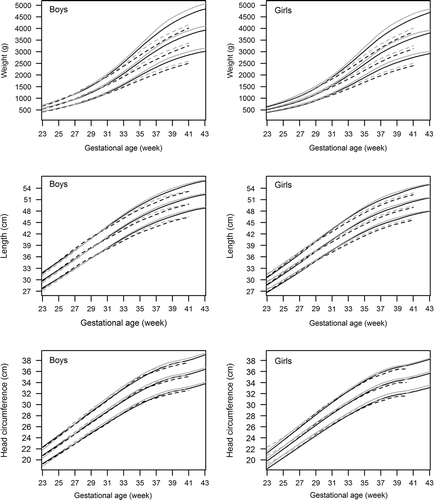
Figure 5. A: Comparison of the birth weight reference of singleton boys (black solid line) to the reference calculated according to the method by Mikolajczyk et al. (Citation29) using population-based birth weight data at 40 gestation weeks (black dashed line). B: Comparison of the birth weight reference of Finnish singleton boys (black solid line) to the birth weight curves of Swedish boys (grey dashed line) (Citation26), UK boys (grey solid line) (Citation25), and US boys (black dashed line) (Citation27). The lines indicate 2nd, 50th, and 98th centiles corresponding to the mean and ± 2 SD curves in normal distribution.
